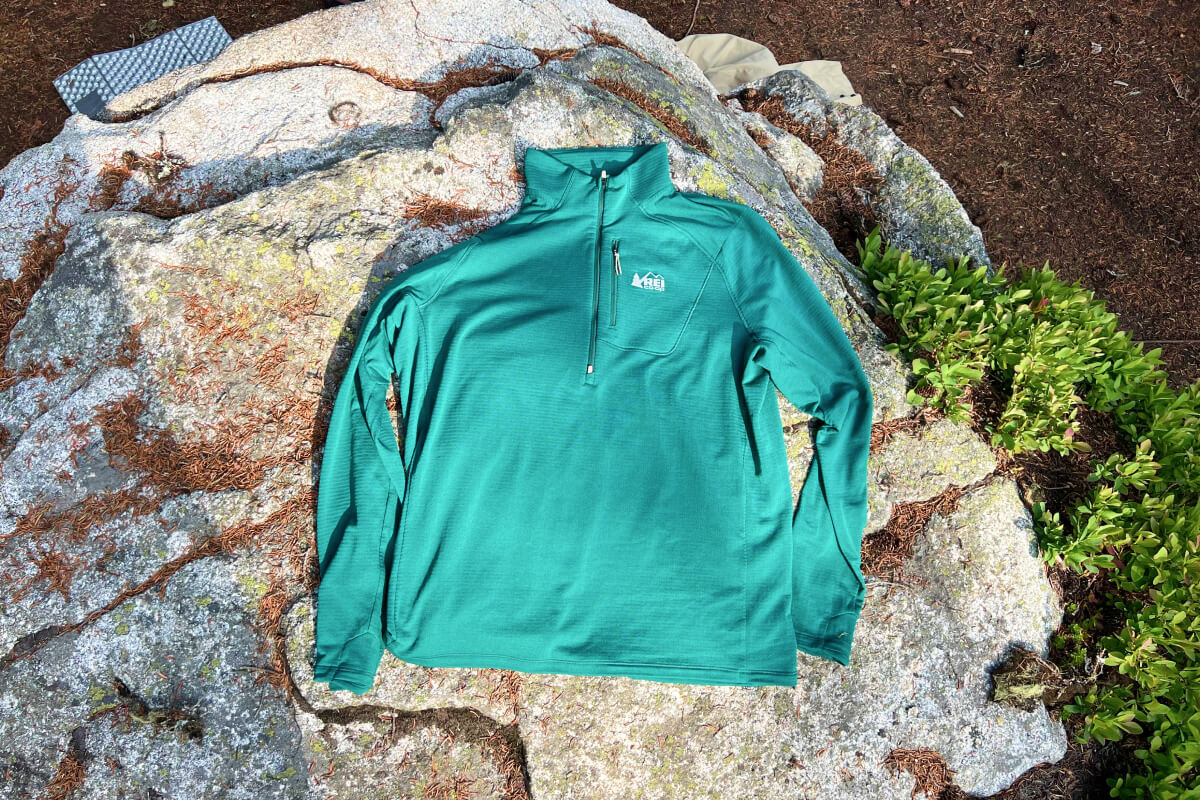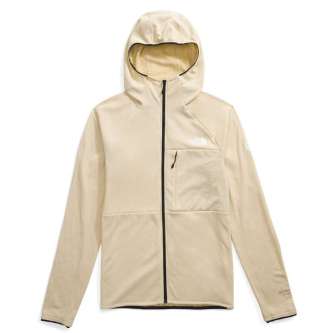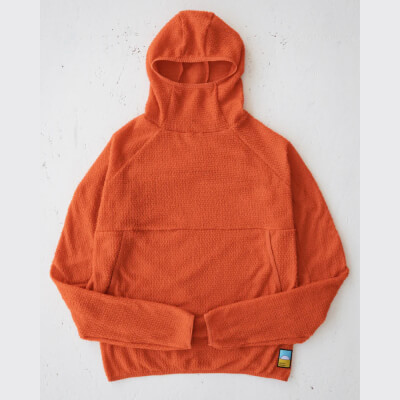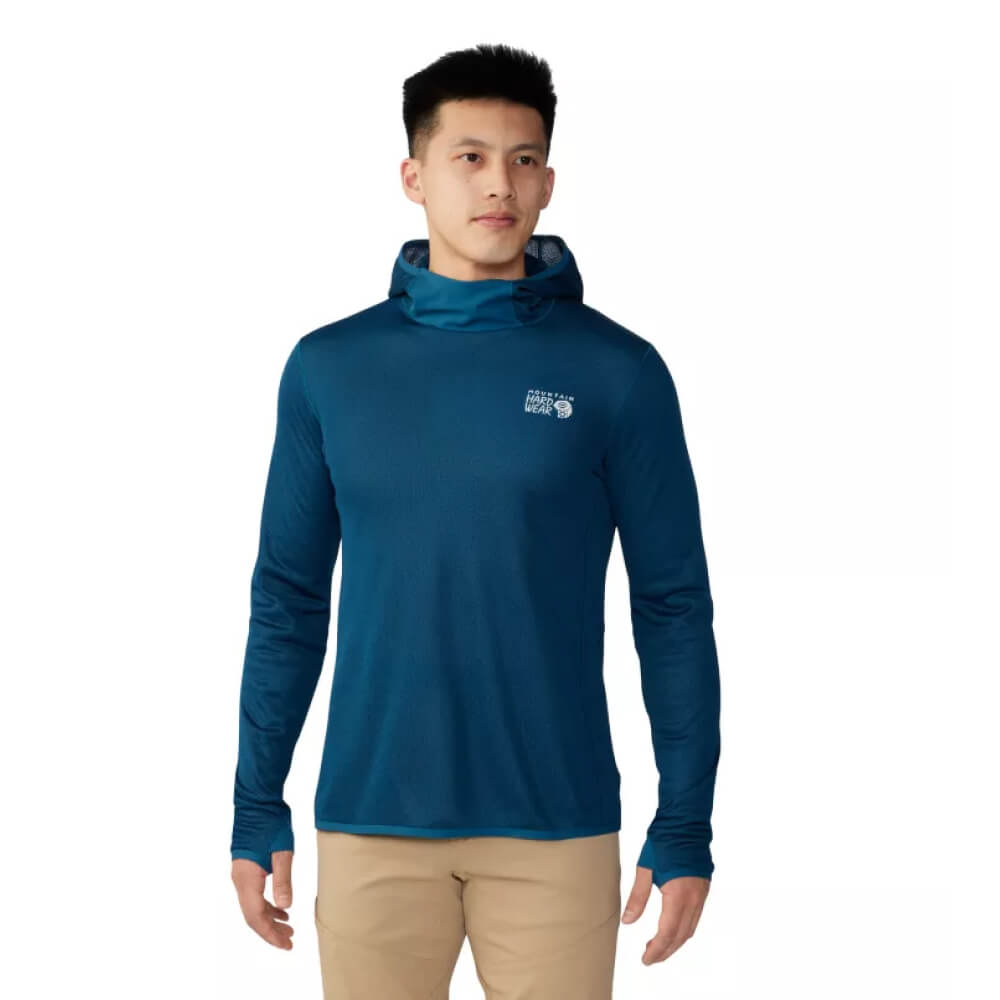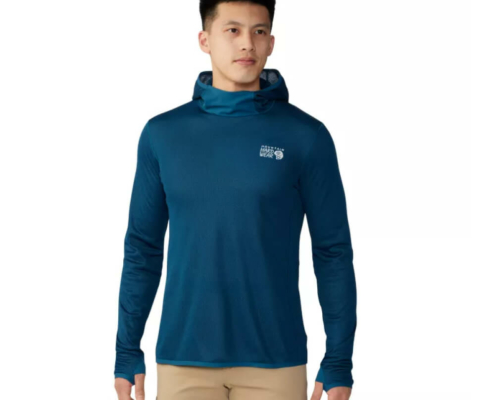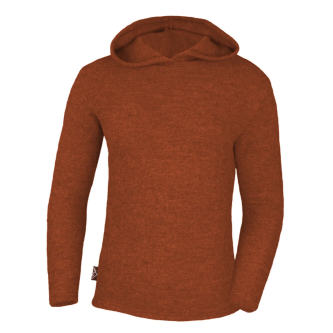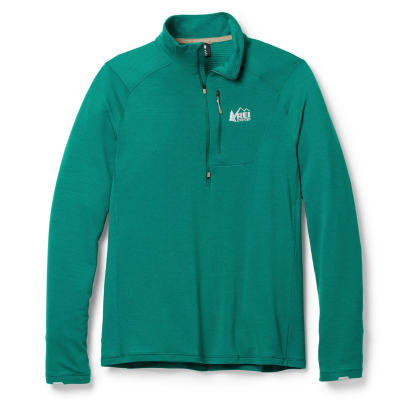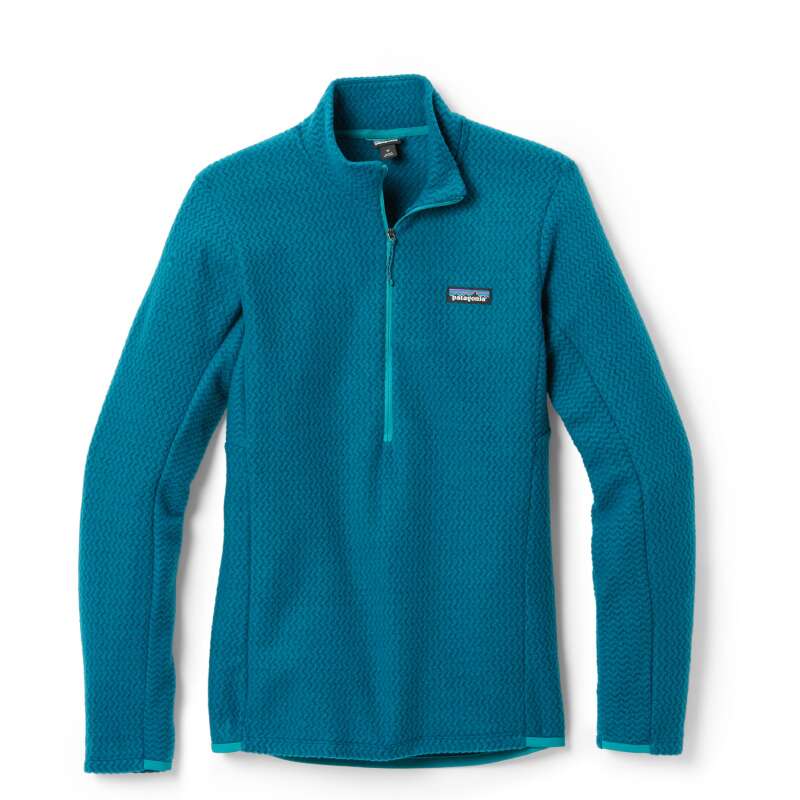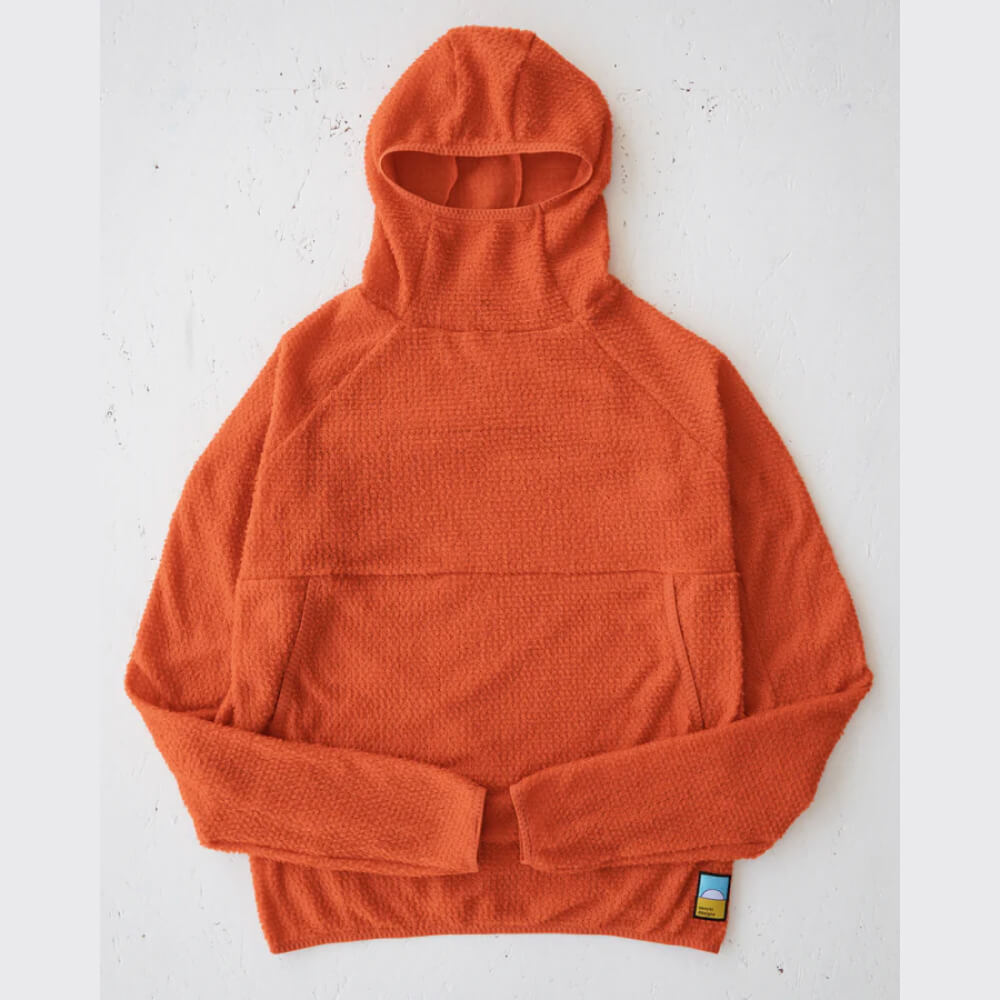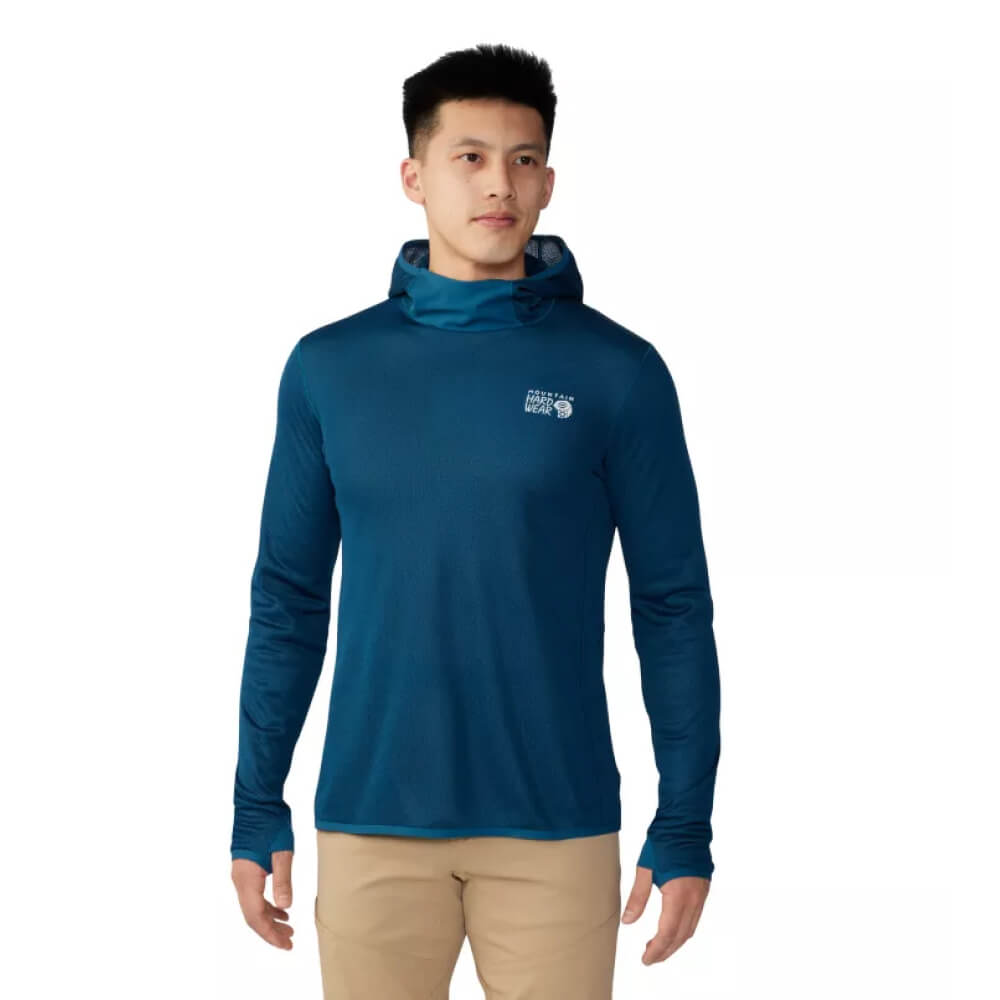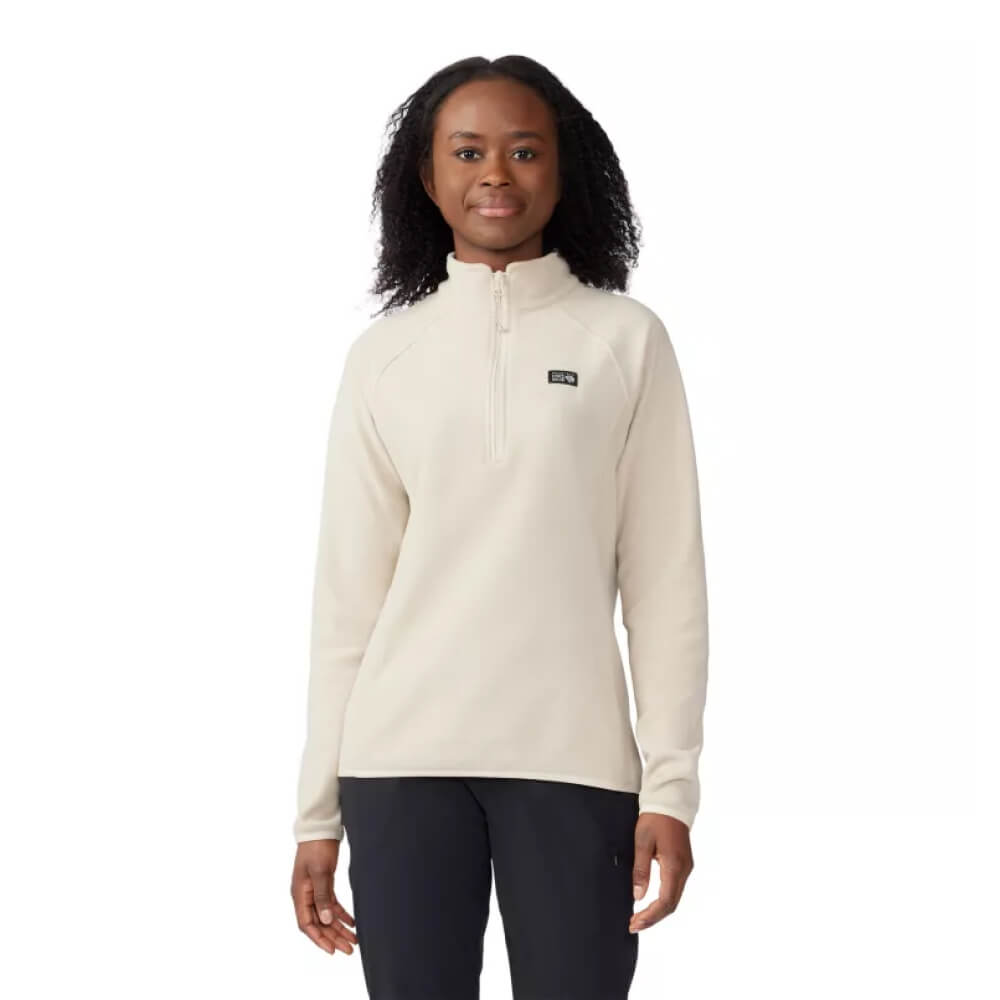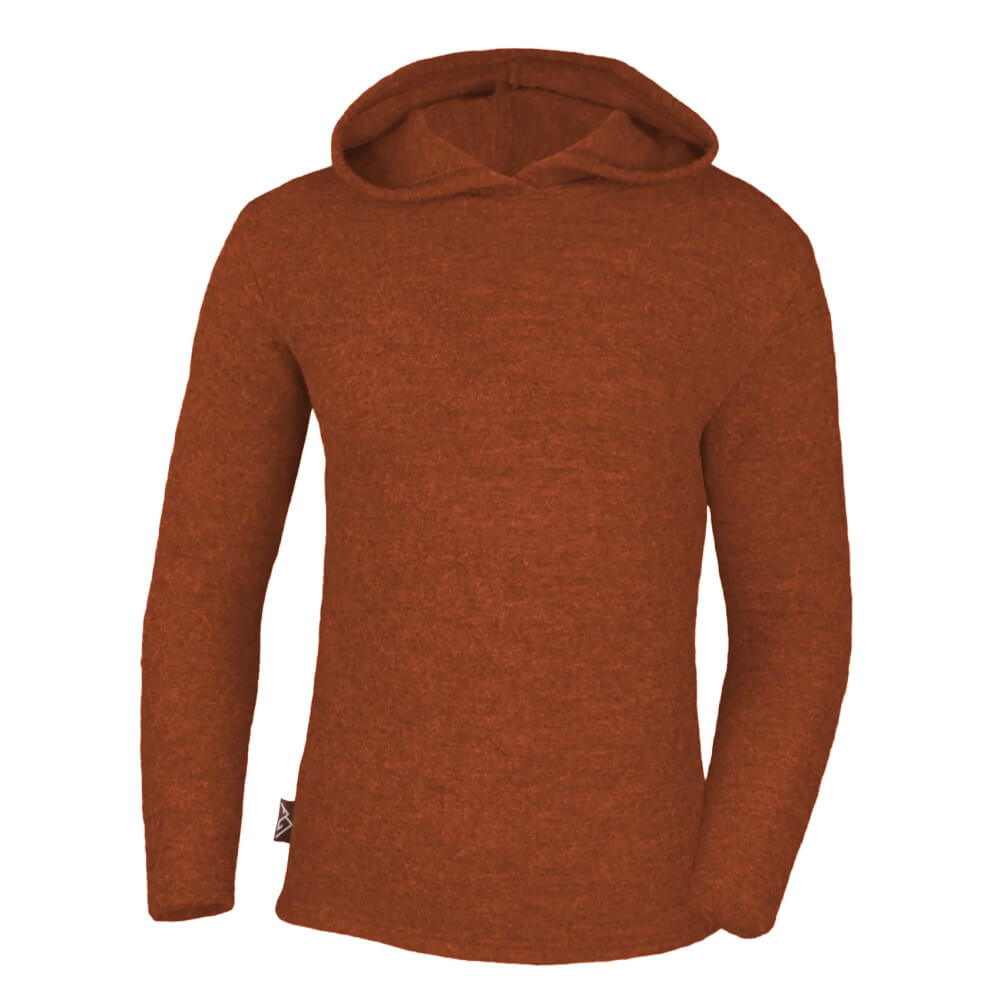Best Lightweight Fleece Jacket Hiking & Backpacking 2024
Last Updated: April 7, 2024
Best Lightweight Fleece Jacket Hiking & Backpacking 2023
Through decades of ultralight hiking experience, we’ve learned a lot about what makes the best lightweight fleece jacket. In summary, a fleece should be just warm enough to cut the chill while stationary, breathable enough to wear while hiking in the cold, and weigh 10 ounces or less. When choosing a lightweight fleece jacket for hiking, we also make sure that it’s also comfy, stretchy, and quick-drying.
This buyer’s guide is informed by a combination of obsessive product info comparisons, hands-on testing, meta-analysis, outdoor industry experience, and decades of gear-review savvy.
We believe our guide is one of the first of its kind to focus exclusively on lightweight fleece jackets, and that we hold the strictest possible weight standard among prominent online gear reviewers. The average weight of our recommended fleece jackets is just seven ounces, at least half of the average weight of fleece jackets in other guides.
Jump to the bottom to read more about the 10 ounce rule, second priority attributes, and our chassis/pocket preferences for a lightweight fleece jacket. Ultralight hikers should consider an Alpha Direct hoodie. And while you’re here, complete your layering with our guides to merino wool hoodies, alpaca hoodies, lightweight fleece pants, windbreakers, down jackets, puffy jackets. Happy trails!
When purchasing through links on our site, we may earn an affiliate commission at no additional cost to you. Here’s why you can trust us.
Best Lightweight & Ultralight Fleece Jacket – Quick Picks
- Best Lightweight: The North Face FutureFleece Hoodie
- Next Best Lightweight: Patagonia R1 Air Pullover
- Best Ultralight: A Polartec Alpha Direct Hoodie
- Next Best Ultralight: Mountain Hardwear AirMesh Hoody
- Best Natural: Appalachian Gear Co All-Paca Fleece Hoodie
- Best Value: REI Co-op Swiftland Running Half-Zip
- Best Budget: Mountain Hardwear Microchill 1/4 Zip
Best Lightweight Fleece Jacket – Comparison Table
| Fleece | Price | Weight | Fabric |
| Polartec Alpha Direct Hoodie | 100 | 5.0 | Alpha Direct, 90gsm |
| Mountain Hardwear AirMesh Hoody | 85 | 5.0 | AirMesh, Brushed, ~100 gsm |
| The North Face FutureFleece Hoodie | 170 | 7.3 | FutureFleece, Grid, 124 gsm |
| REI Co-op Swiftland Half Zip | 89 | 7.5 |
PolarTec Power Grid, 119 gsm
|
| Mountain Hardwear Microchill 1/4 | 65 | 9.0 |
Recycled Microfleece, ~150 gsm
|
| Patagonia R1 Air Pullover | 129 | 10.2 | ZigZag Grid, 162 gsm |
| AGC All-Paca Fleece Hoodie | 165 | 11.0 | 100% Alpaca |
Best Lightweight Fleece Jacket
The North Face FutureFleece Hoodie
The North Face FutureFleece Hoodie is an innovative lightweight grid fleece constructed with high warmth-to-weight Octa fiber (shop now). This material is warmer than most other fleece in its weight class, and lighter and more breathable than most other fleece in its warmth class. With FutureFleece you can have your cake and eat it too. Read more in our full-length FutureFleece Review.
- Price: $170
- Weight: 7.3 oz
- Fabric: FutureFleece, grid, Octa fiber, 124 g/m2
- Pros: Lightweight. Breathable. Warm. High warmth-to-weight. Hood. Recycled materials. Comfy.
- Cons: Expensive. No hand pockets.
Construction & Features
The big story with this lightweight fleece jacket is the namesake fabric. At a macro level, FutureFleece Hoodie is another grid fleece design. The exterior is a flat faced knit, just-stretchy-enough, that holds the garment together and prevents heat from drifting away. The interior is designed in a grid pattern of approximately ¼ inch squares. They alternate between insulative loop clusters and empty space to encourage breathability. The loop clusters are an effective and soft-to-the-touch choice. They add structure to the garment that lofts the exterior face off of your skin. The effect reminds us of a super thin puffy jacket with an open-face interior.
At a microscopic level, the FutureFleece is built with Octa fibers. This is an innovative new yarn. Each strand is manufactured with eight ridges surrounding a hollow core. As the ridged surface interlocks with adjacent strands, it captures dead air space. As does the hollow core. All of which enhances its insulative properties.
The FutureFleece hoodie is feature-light. It is constructed with a full front zip, one zippered chest pocket, and thumb loops. The hem, wrists and hood all have a light touch of elastic. No hand pockets.
Verdict
This is the best all-around lightweight fleece in terms of its comfort, breathability, and warmth-to-weight. This is the best all-around lightweight fleece in terms of its comfort, breathability, durability and warmth-to-weight. Slightly lighter options exist but sacrifice warmth and durability. Warmer options exist, but they’re much heavier. Sure, the North Face FutureFleece Hoodie is expensive, but the quality is there and we’re confident that this is an excellent fleece. We recommend it very highly.
https://backcountry.tnu8.net/1rNQb9
Next Best Lightweight Fleece Jacket
Patagonia R1 Air Fleece
Patagonia R1 Air Pullover is the warmest, coziest, and (sigh) heaviest of the lightweight fleece family. For hiking purposes, it is nearly a strict upgrade to original R1. (shop now)
- Price: $129
- Weight: 10.2 oz
- Fabric: R1 Air, 162 g/m2, zigzag grid, hollow core yarn
- Pros: Warm. Soft. Breathable. Comfy. Sustainable.
- Cons: Heavy end of lightweight spectrum. Expensive. No hood.
Construction & Features
The Patagonia R1 Air Pullover is lighter than average. But at 10.2 oz it’s on the far heavy end of the lightweight spectrum, and it’s the heaviest lightweight fleece jacket in our guide. But it’s so comfortable that we’re willing to fudge the 10 oz rule.
R1 Air is manufactured with 100% recycled 162 g/m2 fleece fabric. But it has a good volume-to-weight ratio. The R1 Air is lightweight for how bulky it feels, which is good thing because that contributes lots of warmth.
Its zigzagging knit pattern is designed to boost breathability in a similar way to how grid fleece functions. We like how the zigzag valleys create less empty space than square grid fleece. This boosts breathability significantly with only a minimal hit to its insulative ability.
The hollow core yarns have a high warmth-to-weight ratio, adding thickness and insulation without weight.
This pullover hiking fleece jacket features a quarter zip for venting, and a sewn chest pocket. There’s no other features, and we appreciate its minimalism. Thumb loops are the only thing we would add.
Verdict
Patagonia R1 Air is supremely comfortable, warm, and breathable. It is a great all purpose fleece that is responsibly designed. It’s a bit heavier than we prefer, but pays it back with added warmth.
Best Ultralight Fleece Jacket
Polartec Alpha Direct Hoodie
A five ounce hoodie made with 90 gsm Polartec Alpha Direct fabric is the best fleece mid-layer for ultralight hikers and backpackers. It is lighter, warmer, more breathable, and faster to dry than any alternative. We refer to these hoodies generally, rather than to a specific model, because AD hoodies are still only manufactured by the Cottage Industry, the performance delta between models is largely flat (since they all use the same fabric), and inventory fluctuates constantly. Read more in our guide to the Best Alpha Direct Hoodies.
- Price: ~$100
- Weight ~5 oz
- Fabric: 90 gsm Polartec Alpha Direct
- Pros: Ultralight. Most breathable. Highest warmth-to-weight ratio. Hooded. Quick dry-time. Stretchy. Very comfy.
- Cons: Least durable. Zero wind resistance.
Construction & Features
Alpha Direct is made with 100% polyester, and the fabric is comprised of a woven lattice which creates structure and a surface on which fuzzy tufts are sewn. It is extremely air permeable, while also maintaining an incredibly lofty profile. You can think of it like the guts of a synthetic puffy jacket, divorced from its outer shell and lining.
This wonder-material is more breathable and air permeable than any other fleece we’ve ever worn, and it’s not even close. However, the downside to this is literal zero wind resistance. A cold breeze will cut right through, which is why recommend keeping a windbreaker or rain jacket on hand for modular layering.
When paired with a windbreaker, this fleece bats well above its weight class in terms of insulation, offering a higher potential warmth-to-weight ratio than any other option. We also nod its hydrophobic, quick-dry speed. Alpha Direct absorbs very very little water, and dries faster than all other fleeces.
A bevy of features are available, including kangaroo pockets, thumb loops, hood cinches, quarter zips. Choose your poison!
Verdict
We say with absolute confidence that, from a pure performance perspective, the best ultralight fleece is an Alpha Direct Hoodie. If you’re an ultralight enthusiast who has yet to upgrade – Order one ASAP! You won’t look back.
Next Best Ultralight Fleece Jacket
Mountain Hardwear AirMesh Hoody
The Mountain Hardwear AirMesh Hoody (shop now) is a very very breathable, comfy, high warmth-to-weight ratio ultralight fleece. It is constructed with Octa yarn, and sold at a great price. See more photos in our Mountain Hardwear AirMesh Review.
- Price: $85
- Weight 5 oz
- Fabric: AirMesh, Brushed Back, Octa Yarn, ~100 g/m2
- Pros: Ultralight. Breathable. No Zippers. High warmth-to-weight. Hood.
- Cons: Not very durable. Not the warmest. Sheds fuzz.
Construction & Features
Like similar high tech FutureFleece from The North Face, Mountain Hardwear AirMesh Hoody is constructed with Octa fiber yarn. Its hollow core and interlocking ridges create microscopic pockets of dead air that boost its insulative properties.
Unlike FutureFleece which is gridded, Mountain Hardwear AirMesh is brushed back, meaning there aren’t empty spaces. The interior surface is all just super soft fuzz. The exterior is literally mesh, and as such, it is shockingly breathable. Even just walking around lets a breeze pass through.
With that in mind, we acknowledge that this very lightweight fleece would not feel very warm at all in windy conditions. Like polartec alpha direct hoodies, you may need to pair it with a wind breaker, or at least a rain shell. On the flip, when you’re not moving and it’s not windy, the Airmesh feels very warm relative to its weight.
The AirMesh Hoody is a lightweight fleece jacket without any zippers, our favorite chassis for a midlayer. Going sans zipper reduces weight, reduces places that can rub or chafe, increases warmth-to-weight, and reduces cost. It’s mostly all upside.
As features go, AirMesh Hoody has thumb loops and elastic around the hem and cuffs. Minimalist, but that’s really all you need in an ultralight hiking fleece jacket.
Verdict
A high-tech, lightweight fleece that’s this warm and hyper breathable for under $100 is a killer deal. This is one of the most well-rounded, high performance ultralight fleece we’ve tested, just know that it is ineffective in the wind without an additional layer over top.
Best Value Lightweight Fleece
REI Swiftland Half-Zip Pullover
REI Co-op Swiftland Half-Zip Pullover (shop now) is a classic Polartec Power Grid fleece that does it all at a great price. It’s comfy, stretchy, breathable, quick-drying, and has a nice and deep two-way zipper. See field shots and read more in our full-length REI Swiftland Pullover Review.
- Price: $90
- Weight: 7.5 oz
- Fabric: Polartec Power Grid, 119 g m/2
- Pros: Stretchy. Breathable. Comfy. Quick-drying. Good value. Actual Polartec Power Grid. Fair warmth-to-weight
- Cons: Not the warmest. No hood.
Construction & Features
While Swiftland is marketed for runs, the fact that it weighs only 7.5 oz in a M’s medium makes it super applicable for hiking and ultralight backpacking too. In fact, we think it’s the Co-op’s best fleece for hiking, better than all of the fleeces they specifically designed for hiking.
The Polartec Power Grid is a tried and true blend of breathability and warmth. A flat face outer fabric prevents heat from drifting off. The interior surface is comprised of alternating clusters of fleece pile and empty space. The former insulates while the latter vents.
The fabric is super stretchy and designed for movement. That makes it very comfortable to hike in, chill in, or sleep in. This is all-purpose athleisure at its finest. Whether you pick it as a hiking or running fleece, you’ll wind up wearing it for everything else too.
REI Co-op Swifltand Half-Zip Pullover is super breathable and stretchy, it’s a lightweight fabric and a bit less warm than average, but that’s also because it’s lighter than average. Nonetheless, it’s warm enough to be a great all-purpose sporty fleece.
As features go, Swiftland has a double separating half-zip, not a quarter zip mind you (it’s deep!) which helps for venting, a chest pocket, and thumb loops. Reflective overlays on the wrists help for night running.
Verdict
This is a lightweight, comfortable, breathable, stretchy, do-it-all Polartec Power Grid fleece for a great price and we recommend it highly. The low weight and high breathability makes it a tad less warm than average, but still plenty warm enough for 3-season hiking.
Best Budget Lightweight Fleece
Mountain Hardwear Microchill Fleece
For a lightweight, affordable, and basic mid-layer, grab the Mountain Hardwear Microchill Fleece. Sometimes the simplest solution gets the job done best. Shop now.
- Price: $65
- Weight: 8.7 oz
- Fabric: Recycled polyester Microfleece
- Pros: Good value. Warm. Simple. Lightweight. Sustainable.
- Cons: Modest breathability, stretch, and quick dry. Low tech.
Construction & Features
We’ve all worn fuzzy “microfleece” before, so you probably have a good idea of how the Mountain Hardwear Microchill Fleece will feel and perform. And to be honest, as lightweight fleece jackets go, it performs pretty dang well.
Traditional fuzzy microfleece is less breathable, less quick drying, less stretchy, and overall less comfortable than more expensive grid fleeces or high tech solutions like Octa and Polartec Alpha Direct. But because it’s less breathable, it captures heat better and has a higher warmth-to-weight ratio and better wind-resistance. And mechanically venting the quarter zip helps make up for any shortfalls.
While far lighter than the average fleece, at 8.7 oz for the men’s medium pullover, the MicroChill falls a bit on the heavier end of our preferences when it comes to ultralight backpacking. That said, you could do far, far worse. Anything sub 10 oz still gets a thumbs up from us. The value to weight to warmth on this one is why we’ve included in our guide.
Verdict
Sometimes simplicity gets the job done best. The Mountain Hardwear Microchill Fleece is warmer and lighter than most “technical” fleeces costing 2-3X as much money. However, it is slightly less breathable, less stretchy, and less quick-drying, but not by all that much.
Best Lightweight Natural Fleece
Appalachian Gear Co All-Paca Fleece Hoodie
Ditch that plastic-y fleece you’re wearing and layer up with an AppGearCo All-Paca Hoodie. This garment is knit from 100% alpaca wool, the highest performing natural yarn on the planet in terms of warmth-to-weight, breathability, and odor-resistance.
- Price: $165
- Weight: 11 oz
- Fabric: 100% Alpaca
- Pros: Top performing natural fiber. Sustainable, no petroleum products. Durable enough for hiking, climbing. Highly odor-resistant. Soft, comfy, warm.
- Cons: Expensive. Slightly lower warmth-to-weight ratio than top tier fleeces. Dries slower than poly/nylon.
Construction & Features
Unlike every other lightweight fleece in our guide, the AppGearCo hoodie is made from alpaca wool, rather than petroleum. And the benefits are numerous. Not only is it more sustainable, but the naturally hollow-core fibers still deliver a high warmth-to-weight ratio.
Alpaca is slightly superior to merino in terms warmth-to-weight, quick-dry, breathability, and odor-resistance, as well as sustainability because alpacas do less damage to grazing lands than sheep.
The chassis of the All-Paca hoodie is quite minimalist and utterly without features. It’s stretchy, soft, comfy, and breathable. But there’s plenty going on beneath the hood too, so to speak. For a natural fabric, it’s quite durable, and they’ve worked extra hard to design long-lasting seams, which AGC refers to as “The Trail Seam.” Lastly, it features a droptail hem which prevents ride up during big reaches or when worn with a pack.
Verdict
It might not be the lightest fleece in our guide, but the AGC All-Paca Hoodie holds it own on warmth-to-weight nonetheless. It is comfy, sustainable, breathable, and an exceptional performer all-around. Highly recommended. This will be the fleece you grab first wherever you go.
Why fleece jackets should weigh 10 oz or less
Ten ounces of fleece jacket is all you need for 3-season hiking and backpacking. As a midlayer, fleece’s job is to ensure you are comfortable in cool temperatures while stationary, and comfortable in cold temperatures while also generating heat as you hike. A fleece hiking jacket is not responsible for keeping you warm while stationary in cold temperature; that is the job of your puffy jacket.
As an insulation material, down and synthetic batting are far superior to fleece in terms of warmth-to-weight ratio. Therefore, any insulation weight past what is needed for a lightweight fleece jacket to keep you comfortable while stationary-in-cool or moving-in-cold would be better dedicated to a puffy jacket.
Lightweight fleece jackets weighing 10 ounces or less sufficiently checks those boxes and is plentifully available. Therefore, we believe that midweight and heavyweight fleece serves little-to-no purpose for hiking and backpacking. It is very suboptimal.
Lightweight Fleece Jacket + Puffy vs Heavyweight Fleece
Hiker 1 has a Patagonia Better Sweater, a very popular heavyweight fleece that weighs 22.5 ounces. Hiker 2 has a North Face FutureFleece Hoodie that weighs 7.2 ounces, and a Mountain Hardwear Ghost Whisperer puffy jacket that weighs 8.8 ounces, for a combined weight of 16 oz.
Stationary comparison: Hiker 1 can stay comfortable while stationary in their fleece down to 45 degrees. Hiker 2 can stay comfortable while stationary down to 55 degrees in their fleece, and comfortable down to 35 while stationary when wearing both their fleece and puffy.
On-the-move comparison: Hiker 1 can comfortably hike in their Better Sweater in temps ranging from 20-35, but any warmer than that and they will overheat. Hiker 2 can comfortably hike in their FutureFleece in temps ranging from 30-45, or add their ghost whisperer in for temps ranging from 10-30.
Comparison Results: Hiker 2 is carrying 29% less weight and is more comfortable across a significantly wider range of temperatures both while moving and while stationary.
In conclusion, the combination of lightweight fleece jacket plus a puffy jacket weighs less than heavyweight hiking fleece jacket, and outperforms it in all respects. While ten ounces is a slightly arbitrary cut off point, it is easy to remember, and a good line to draw in the sand. Any weight you are putting towards hiking fleece past 10 ounces would be better spent towards a puffy jacket.
Specific Considerations for Backpacking Fleece
There are some minor differences between the how a lightweight fleece jacket is used on a day hike vs a backpacking trip. However, we feel that the differences are minor enough that was have not organized them separately in this guide. But there are three considerations worth calling out.
- Backpacking fleece should be extra light. Backpackers carry heavier packs than day hikers, and carry the weight over longer distances. Therefor, we recommend backpackers focus specifically on fleeces weighing less than eight ounces.
- Backpacking fleece needs to be versatile. If it’s too breathable, it won’t perform as well for hanging out at camp. If it’s too warm, you won’t be able to hike in it. Find a good all-around model.
- Hoods are more important. We prefer a backpacking fleece jacket with a hood to compensate for the fact that we usually sleep in hoodless quilts, rather than sleeping bags.
Best Chassis for a Lightweight Fleece Jacket
We’ve thought a lot about the ideal configuration of zippers and hoods that make the best lightweight hiking fleece jackets. For starters, we want to minimize the use of zippers as they add weight without warmth, additional cost, pressure points, and also create another failure mechanism.
It’s acknowledged that zippers add venting, but our preferred lightweight fleece jackets are sufficiently breathable, which means venting is of minimal benefit.
We frequently sleep in our fleece jacket, which is another reason to dislike zippers, as they can poke or rub uncomfortable. We prefer hoods, as they are nice for hiking in cool windy weather, weigh only an additional ounce or so, and add head insulation when sleeping with a hoodless quilt, and when worn over a hat, secure it down to your head nicely.
Lightweight Fleece Jacket Chassis Power Ranking
- Hoody, no zippers
- Quarter zip pullover, hoody
- Quarter zip pullover, hoodless
- Full zip hoody
- Full zip jacket, hoodless
Why We Prefer A Kangaroo Pocket
Given our druthers, we prefer a lightweight fleece jacket with a kangaroo pocket (which also means no full length zippers). A kangaroo pocket is optimal for the following reasons:
It is the best way to warm your hands, since each hand will radiate some amount of heat onto the other. A kangaroo pocket does not involve a zipper, which means your hands won’t scrape against metal. It saves weight, and it won’t ever rub while you have your hip belt on. A kangaroo pocket adds excess fabric over your core, which is an important insulation point and a good use of material.
Fleece Jacket Pocket Power Rankings
- Kangaroo Pocket
- Chest Pocket
- Separate Hand Pockets
Stretch, Moisture Wicking, Quick-Drying
All fleece is stretchy, moisture wicking, and quick drying by definition. While some lightweight fleece jackets exhibit more of these traits than others, we feel that the baseline of classic microfleece is good enough. We care more about optimizing for warmth-to-weight and breathability, as those traits have a bigger impact on how comfortable you will be while wearing the fleece in most situations.
All fleece is at least slightly stretchy. As hiking is mostly just walking with trekking poles, we don’t need to worry about big climbing reaches. Moisture wicking is of little importance to us as well, as we tend to do most of our hiking in long sleeve sun hoodies, so there is less opportunity for the fleece itself to pick moisture up directly off the skin.
Quick drying is perhaps the most important of these secondary traits, usually due to sweat. But once again all hiking fleece jackets, even inexpensive ones have a solid baseline when it comes to quick-drying.
While some lightweight fleece jackets might be more quick drying than others, we’ve never met a lightweight fleece that was “slow-drying” and think this isn’t a real problem. Rather, it’s something that marketing wants us to think is important.
Conclusion
Once more for good measure – Ditch those heavyweight fleeces! They are a bulky and very ineffective use of carried weight.
We hope you’ve found this buyers guide to lightweight hiking fleece jackets helpful, and we know you’ll love any of the options we’ve listed. They will keep you warm when stationary in cool temps or when active in cold temps. Happy hiking!

 Best Backpacking Battery Pack Portable Charger 2024
Best Backpacking Battery Pack Portable Charger 2024
